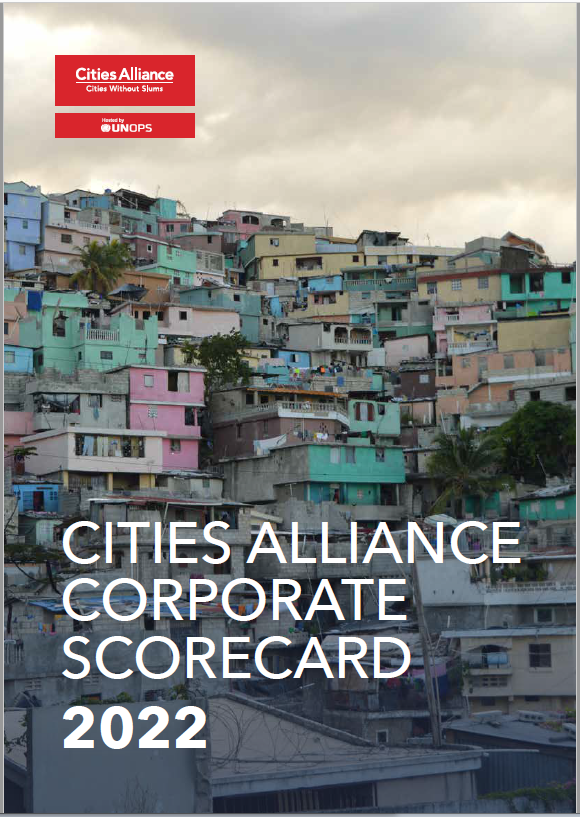Corporate Scorecard

The Cities Alliance implements a performance monitoring system to measure the results of its activities and capture their impact in a systematic way.
At the core of Cities Alliance’s performance system is the Corporate Scorecard, which serves as a summary of the organisation’s overall results and performance, and as an annual report to the Management Board. The scorecard includes 42 indicators and provides the Cities Alliance Secretariat and members with information on the achievement of development results, effectiveness in achieving those results, and the efficiency of operations. It also supports strategic planning to fill crucial gaps, foster learning and corrective actions, and promote accountability for results.
In addition to the core indicators reported in the scorecard, each Cities Alliance programme designs and implements a customised Monitoring, Evaluation and Learning (MEL) framework. This ensures accurate and specific reporting on programme results and incorporates a learning function into the Monitoring and Evaluation (M&E) system to improve programmatic knowledge sharing, organisational learning, decision making and ultimately performance.
Results Framework
As per its Charter, the main objective of Cities Alliance is to reduce urban poverty and promote the role of cities in sustainable development. To assess the extent to which its efforts and those of partners are making progress toward that objective, Cities Alliance monitors, evaluates and publicly reports its activities within an agreed-upon corporate performance and results framework and through a dedicated results-based management system. Cities Alliance has utilised a tiered results framework to manage and track progress towards strategic objectives and development results at the corporate level since 2013.
The Cities Alliance Corporate Results Framework (CRF) follows international standards and practices for results based management, maps the Cities Alliance contribution to the Sustainable Development Goals, and defines organisation-wide standards for baselines, milestones, targets, data sources, as well as the tools and frequency for data collection. Results are reported annually through the Corporate Scorecard.
The CRF is built around a theory of change that articulates the pathway from Secretariat outputs to the intended longer-term development impact. The CRF lays out the products and services that will be delivered over a period of time (Tier IV), the changes these products and services will generate in the short and medium term (Tier III), the effect on the main clients (Tier II), and the overall influence on national and global developmental goals (Tier I). Broadly defined, the city is the client of Cities Alliance, while the ultimate beneficiaries of Cities Alliance’s activities are the urban poor.
Tiers Explained
Tier I is primarily contextual and reports on the long-term development goals that partner countries are achieving. It is necessary to situate Cities Alliance’s work within the broader SDG mission.
Tier II represents the development impact in cities that Cities Alliance contributes towards through i) legal/policy change, ii) infrastructure interventions, and iii) larger follow-up investments.
Tier III represents the direct results of Cities Alliance influence on local authorities and the living conditions of the urban poor, as well as efforts to address the root causes of social exclusion and urban poverty across the six thematic areas.
Tier IV represents the performance of the Secretariat in delivering the mission of the Strategic Plan: efficiently delivering outputs, managing effective day-to-day operations, and harnessing organisational enablers.












